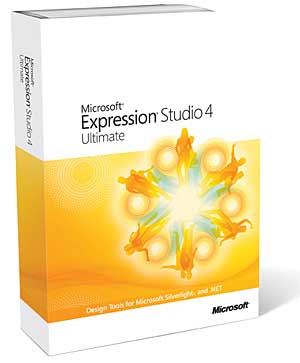2011 Editors' Picks for the Best in Streaming Video
Microsoft Expression Encoder 4 Pro
 While the Flash Media Live Encoder does a good job of encoding content for its own HTTP delivery solution, Microsoft has taken on a much bigger challenge with this $199 professional software-based encoder: Not only does it do Smooth Streaming, but it also implements the draft Pantos spec to deliver iOS-compliant content to Apple’s iPad, iPhone, and iPod touch devices. Bravo to the Microsoft team for taking on this challenge!
While the Flash Media Live Encoder does a good job of encoding content for its own HTTP delivery solution, Microsoft has taken on a much bigger challenge with this $199 professional software-based encoder: Not only does it do Smooth Streaming, but it also implements the draft Pantos spec to deliver iOS-compliant content to Apple’s iPad, iPhone, and iPod touch devices. Bravo to the Microsoft team for taking on this challenge!
—Tim Siglin
Telestream Wirecast
 Telestream Wirecast is a software-only live (or live to disk) video production tool that mixes multiple inputs; adds transitions, titles, and other effects; and produces a stream that you can have delivered by CDNs such as Limelight and Akamai and live streaming service providers such as Livestream, Ustream, Justin.tv, and WebCast-TV. When configured with Wowza Media Server 2 Advanced, Wirecast can serve multiprotocol streams to the iPhone and the iPod touch; to Flash, Silverlight, and QuickTime web players; and to IPTV set-top boxes. Wirecast offers an exceptional blend of well-targeted functionality that is unique in the price range, and after you get settled into the interface, it’s relatively simple to use. If you’re serious about chucking those writing chores to make it on internet TV, or if you have a real job and just want to create some highly polished live or live-to-disk internet broadcasts, Wirecast should be on top of your purchasing list.
Telestream Wirecast is a software-only live (or live to disk) video production tool that mixes multiple inputs; adds transitions, titles, and other effects; and produces a stream that you can have delivered by CDNs such as Limelight and Akamai and live streaming service providers such as Livestream, Ustream, Justin.tv, and WebCast-TV. When configured with Wowza Media Server 2 Advanced, Wirecast can serve multiprotocol streams to the iPhone and the iPod touch; to Flash, Silverlight, and QuickTime web players; and to IPTV set-top boxes. Wirecast offers an exceptional blend of well-targeted functionality that is unique in the price range, and after you get settled into the interface, it’s relatively simple to use. If you’re serious about chucking those writing chores to make it on internet TV, or if you have a real job and just want to create some highly polished live or live-to-disk internet broadcasts, Wirecast should be on top of your purchasing list.
—Jan Ozer
WebM
Google’s decision last summer to open source VP8 in the form of WebM was the opening salvo of yet another codec war, and its move in early 2011 to drop support for H.264 in the Chrome browser (though it will still work within the Flash and Silverlight plug-ins) signaled that, as Tim Siglin wrote, “a unified HTML5 <video> tag is now a pipe dream.” And despite the fact that he found WebM’s quality to be “good enough” in comparison to H.264, Jan Ozer wrote that Google hasn’t “created any positive reason to distribute video in WebM format. They haven’t created any new revenue opportunities, opened any new markets or increased the size of the pie. They’ve just made it more expensive to get your share, all in the highly ethereal pursuit of ‘open codec technologies.’” And so WebM makes our list in much the same way that TIME magazine occasionally feels compelled to choose a dictator as its “Person of the Year.”
—Eric Schumacher-Rasmussen
